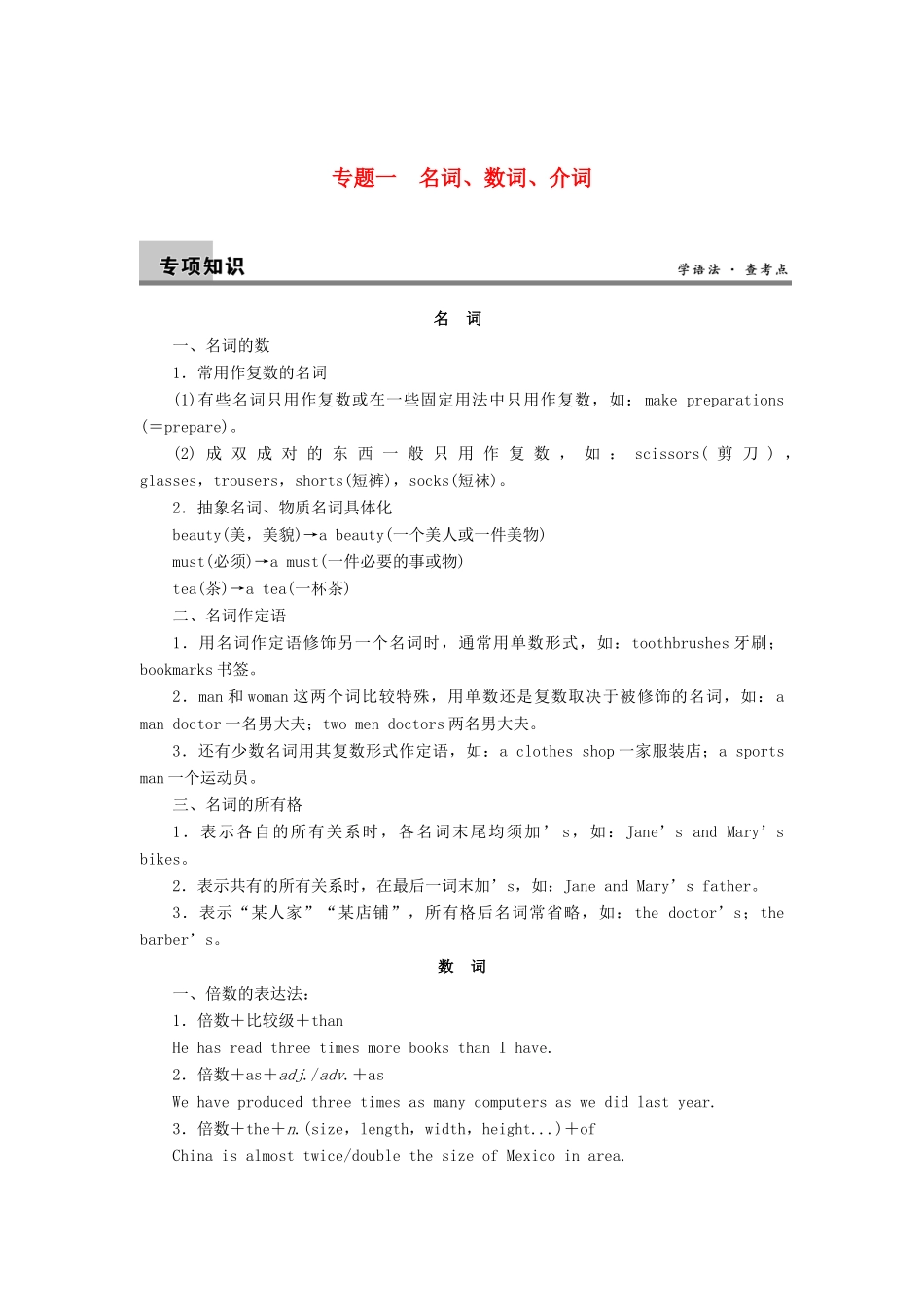专题一 名词、数词、介词 名 词一、名词的数1.常用作复数的名词(1)有些名词只用作复数或在一些固定用法中只用作复数,如: make preparations (=prepare)。(2) 成 双 成 对 的 东 西 一 般 只 用 作 复 数 , 如 : scissors( 剪 刀 ) ,glasses,trousers,shorts(短裤),socks(短袜)。2.抽象名词、物质名词具体化beauty(美,美貌)→a beauty(一个美人或一件美物)must(必须)→a must(一件必要的事或物)tea(茶)→a tea(一杯茶)二、名词作定语1.用名词作定语修饰另一个名词时,通常用单数形式,如:toothbrushes 牙刷;bookmarks 书签。2.man 和 woman 这两个词比较特殊,用单数还是复数取决于被修饰的名词,如:a man doctor 一名男大夫;two men doctors 两名男大夫。3.还有少数名词用其复数形式作定语,如:a clothes shop 一家服装店;a sports man 一个运动员。三、名词的所有格1.表示各自的所有关系时,各名词末尾均须加’ s,如:Jane’s and Mary’s bikes。2.表示共有的所有关系时,在最后一词末加’s,如:Jane and Mary’s father。3.表示“某人家”“某店铺”,所有格后名词常省略,如:the doctor’s;the barber’s。数 词一、倍数的表达法:1.倍数+比较级+thanHe has read three times more books than I have.2.倍数+as+adj./adv.+asWe have produced three times as many computers as we did last year.3.倍数+the+n.(size,length,width,height...)+ofChina is almost twice/double the size of Mexico in area.4.倍数+what 从句The length of the road is twice/double what it was three years ago.5.比较级+than...+by+倍数The ruler is longer than that one by twice.二、表示“每隔……”时,可以使用基数词或序数词,即“every+基数词+名词复数”或“every+序数词+名词单数”,如:表示“每隔两天”用 every three days 或every third day。介 词一、时间介词:at,in,on1.at 的用法(1)时间的一点,时刻等,如:at 12∶00,at noon。(2)较短暂的一段时间,可指某个节日或被认为是一年中标志大事的日子,如: at Christmas。2.in 的用法(1)表示在某个较长的时间内。注意:当时间名词前被 this,that,last,next,some,every 等词限定时,通常不用任...


